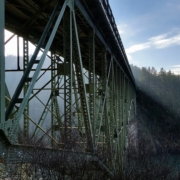I’ve been in a funk this summer, and feeling, frankly, as though all this writing is pointless. Aren’t there already enough books in the world? Despite good friends, despite a class in which I was assigned to write one metaphor per day. (Which can also be similes, “This weird funk, purple like Puget Sound at dusk,” or brilliant word substitutions: “A blue funk washed over me.”) Despite walks. Despite baking many loaves of sourdough bread.
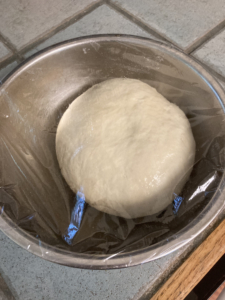 But it is August, and that means POPO, or POetry POstcard Fest. I don’t always sign up for August, as I participate in my friend Carla’s February postcards event each year. But this year, August postcards feels like a good idea. Somewhere I have a quote written down, about letting go of expectations and big-picture goals and doing just the one next right thing. The metaphors can be that next right thing; the postcards can be that next right thing.
But it is August, and that means POPO, or POetry POstcard Fest. I don’t always sign up for August, as I participate in my friend Carla’s February postcards event each year. But this year, August postcards feels like a good idea. Somewhere I have a quote written down, about letting go of expectations and big-picture goals and doing just the one next right thing. The metaphors can be that next right thing; the postcards can be that next right thing.
Carla’s postcard month is about peace — the idea being that if you want more of something in your world, then you can begin by putting more of it into your world. I like the idea of writing all month on a theme, and in February I wrote about peace, but also about my marriage and gratitude. (The original had the word peace embedded in it somewhere.)
Violinist at the Window
—Henri Matisse, 1918
Shades of ochre and orange
make me think of the grapefruit
my husband bought yesterday
at the market, and of the grapefruit spoon,
a Valentine’s Day gift,
used this morning at breakfast.
The song Matisse’s violinist plays
is Chopin, a prelude, or maybe a nocturne,
and those make me think, too,
of my husband. Notes lifting
from the violin, both sweet and tart.
–Bethany Reid
This morning, in my attempts to distract myself, I drifted over to a couple favorite blogs: one being Rita’s Notebook, the other,  photographer Loren Webster’s In a Dark Time… After reading other people’s words, I can tell myself, “See, someone is reading. It does matter.” You don’t have to be Stephen King or James Patterson to have readers.
photographer Loren Webster’s In a Dark Time… After reading other people’s words, I can tell myself, “See, someone is reading. It does matter.” You don’t have to be Stephen King or James Patterson to have readers.
Then I visited my old blog, One Bad Poem, and reread posts from around the time of my father’s death. I had a houseful of teenagers! And I was teaching! And I kept writing! Gratitude was splashing all over me. So many farm pictures, so many stories and scraps of poems…
When you write a poem on a postcard and mail it, you know that you have at least one reader.
So this August, in addition to wanting a little more kindness and generosity toward my own writing life (from me, I mean), I’m asking myself, what else do you want more of in the world, Bethany? That’s what I’ll be writing about. And so here I am, writing it down again, and feeling grateful for you, reading these words (grateful for comments and emails, too).
Next, another loaf of sourdough bread.



 But it is August, and that means POPO, or
But it is August, and that means POPO, or  photographer Loren Webster’s
photographer Loren Webster’s 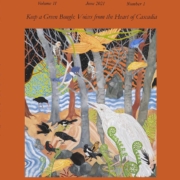
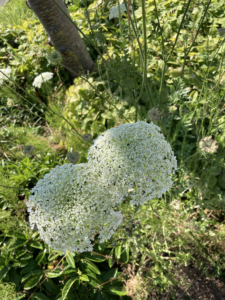 The collection features artwork from Jocelyn Curry, Susan Leopold Freeman, Anita Leigh Holliday, Sandra Jane Polzin and others, and poems and prose by a wealth of northwest writers including Judith Roche (1941-2019), and our new Washington State poet laureate Rena Priest. Woven throughout one sees the panicky facts of destruction: “A raft of debris as large as Africa” (Kathleen Flenniken, “Horse Latitudes”); “smoke / hangs like a veil, a scarf we can’t breathe through” (Sharon Hashimoto, “Back Fires: September 2020”). It’s time, these poems and prose pieces exhort us again and again: “We’ve stayed calm for too long,” and “It’s time to move quickly” (Iris Graville, “Not Just a Drill”; “Truth time” (Risa Denenberg, “Posthuman”).
The collection features artwork from Jocelyn Curry, Susan Leopold Freeman, Anita Leigh Holliday, Sandra Jane Polzin and others, and poems and prose by a wealth of northwest writers including Judith Roche (1941-2019), and our new Washington State poet laureate Rena Priest. Woven throughout one sees the panicky facts of destruction: “A raft of debris as large as Africa” (Kathleen Flenniken, “Horse Latitudes”); “smoke / hangs like a veil, a scarf we can’t breathe through” (Sharon Hashimoto, “Back Fires: September 2020”). It’s time, these poems and prose pieces exhort us again and again: “We’ve stayed calm for too long,” and “It’s time to move quickly” (Iris Graville, “Not Just a Drill”; “Truth time” (Risa Denenberg, “Posthuman”).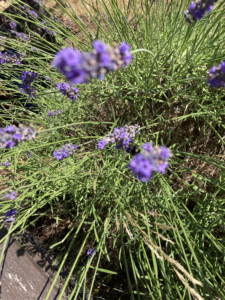 And all that’s so worth saving calls to us from every page: “Surrounded by birdsong in many languages / walled in by forty-, fifty-, sixty-foot cedar, fir, hemlock / maples leafed out, honeysuckle beginning” (Ronda Piszk Broatch, “Apologizing for Paradise”); native blackberries “carry the taste of my childhood forest on a summer day” (Irene Keliher); “we pick up and play and write and sing and dance so that the Honduran emerald hummingbird the leatherback sea turtle the mountain gorilla the tiger salamander…” (Penina Taesali, “The Word of the Day”).
And all that’s so worth saving calls to us from every page: “Surrounded by birdsong in many languages / walled in by forty-, fifty-, sixty-foot cedar, fir, hemlock / maples leafed out, honeysuckle beginning” (Ronda Piszk Broatch, “Apologizing for Paradise”); native blackberries “carry the taste of my childhood forest on a summer day” (Irene Keliher); “we pick up and play and write and sing and dance so that the Honduran emerald hummingbird the leatherback sea turtle the mountain gorilla the tiger salamander…” (Penina Taesali, “The Word of the Day”).